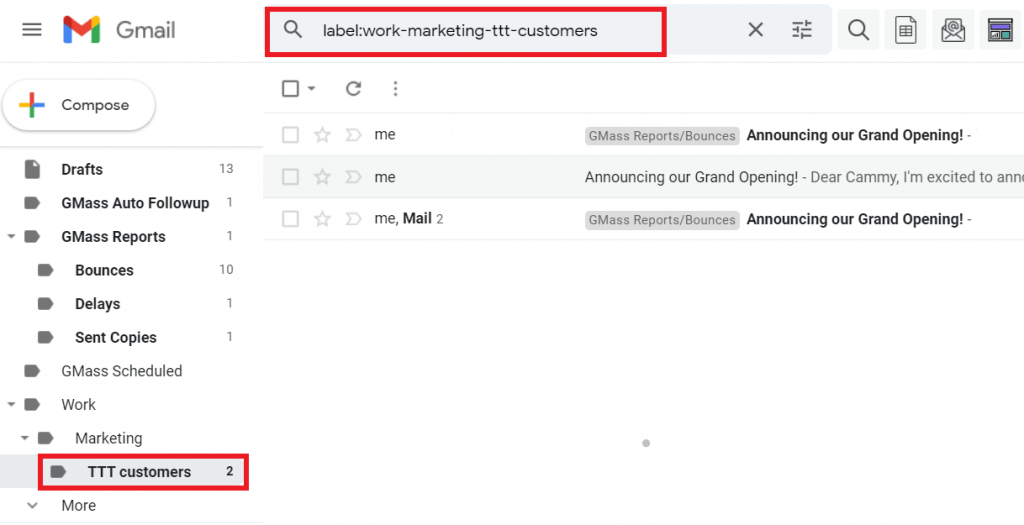20 Top Tips For Picking Email List Sellers
20 Top Tips For Picking Email List Sellers
Blog Article
What Aspects Should I Take Into Consideration When Buying The Family Medicine Email Database?
To reap the maximum benefits from your outreach and marketing campaign, it is essential to be aware of a few key factors. Consider: 1. Quality and accuracy of the data
Source of data: Verify that the provider gathers information from reliable and verified sources. This could include licensing bodies, medical directories professional associations, opt-in databases. The email addresses of family medicine professionals' addresses must be current and relevant to the audience you are targeting.
Verification Process Ask about the verification process of the service provider. To eliminate inactive or invalid emails, the list of emails is regularly cleaned and kept up to date. Validated email addresses reduce bounce rates and increase the speed of delivery.
Options for segmentation. The list must permit segmentation based on criteria such as geographical place of residence (country/state/city) or years of experience (or practice size) or specific areas of importance. Segmentation increases engagement by allowing for more specific and targeted outreach.
2. Legal Regulations
Data Privacy Laws â Ensure you are in compliance with the General Regulations on Data Protection in Europe as well as the California Consumer Privacy Acts of the U.S.A. To comply with regulatory requirements it is crucial that email addresses are collected legally and consented to.
CAN-SPAM Act Compliance: If you're involved in email marketing within the U.S., make sure that your list is compliant with the CAN-SPAM Act. This means having clear opt-out methods and not using deceptive subject lines or false details in your emails.
Confirm opt-in consent was granted to obtain the email address. Family medicine doctors were willing to receive marketing messages from third parties, ensuring the compliance of patients and reducing complaints about spam.
3. Provider Reputation
Choose a trustworthy provider who has a proven track record in providing data that's top-quality and complies with. Look for customer reviews, testimonials as well as case studies, to ensure the provider is trustworthy and reliable.
Transparency. The provider must clearly state what and when the data is updated. This is a red flag if the provider of data cannot describe their methods of sourcing.
Customer Support: Make sure the service you choose offers solid support service for customers. There may be assistance needed in technical queries including list segmentation and ensuring that the list meets the requirements.
4. Cost of Return and Return on Investment
Pricing Models: Providers provide various pricing options, such as pay-per-contact, flat fee, or subscription-based services. Choose a pricing option that suits your budget and ensures a positive return on investment.
Refund/Replacement Policy: Many trustworthy providers provide the option of a replacement or return policy in the event that your email address is invalid or out-of-date. Be sure to read the policy prior purchase.
Value for money: Don't look at the costs. Although a list with a lower price may seem appealing, it could cause poor delivery and excessive bounce rates. A high-quality list will provide better targeted advertising, better engagement rates and a better return on investment.
5. Use and Ownership of Data
Single Use or. Clarify the use of the list. Lists that can be used for multiple campaigns provide more value. This is particularly true in the event that you plan to do regular outreach.
Exclusive vs. Shared Lists: Determine if a list is only available to your business, or when multiple buyers are purchasing it. Exclusive lists tend to have a less chance of oversaturating audiences, and usually result in a higher level of engagement.
6. Data Integration and Format
CRM Compatibility. Make certain that your list of email addresses is designed in a manner that is compatible with the system you are using to manage your customer relationships (CRM). This will ensure seamless integration and user-friendly.
Ease of use: The list should be easy to sort, segment or organize in accordance with the requirements of your campaign. This will simplify the targeting and messaging.
7. Ethical Aspects
Relevance of Outreach: Family medicine professionals are busy professionals, so ensure your outreach is relevant to their profession. Avoid sending generic or irrelevant messages, since they could harm your brand's reputation and lead to poor engagement or complaints about spam.
Avoid Spam Methods. Send out emails in a thoughtful manner. Do not over-email. Unsolicited emails or unrelated offers can lead to unintentional unsubscribes.
The article's conclusion is:
If you'd like to be sure your campaign is successful, consider the following aspects when buying a Family Medicine Email List: Quality of the data and legal compliance, as well as the provider's reputation. It is important to look for information that's been segmented and verified to be in compliance with privacy rules and also in line with your target audience. Investing in a quality database and sending relevant marketing messages can help you increase engagement rates and maximize your return on investment. Follow the most popular family medicine email list for website info.
What Factors Should I Consider When Buying A Urgent Care Email List?
It's important to consider several aspects when buying an email list for urgent treatment. This will help ensure that the list you buy is correct and compliant with the law and pertinent to your marketing goals. Consider these key factors: Data Accuracy and Quality
Source of data: Make sure that the company is getting the data they need from reliable sources, such as medical associations or databases for healthcare. Avoid lists that are created through scraping or other methods that may not be reliable, as they may have outdated information.
Verification Process: Confirm that the address list is checked and maintained regularly. A reliable supplier will use a rigorous verification process to eliminate outdated or invalid email addresses. This will guarantee high delivery, and lower bounce rates.
Segmentation and Targeting: The segmentation should include details such as the location of the clinic (e.g. city, state, or region), its size, and any specialties (e.g. diagnostics and pediatrics, etc.)) and the roles of key decision-makers (e.g. doctors, practice owners). Targeted list improves the relevance of your outreach, and improves engagement rates.
2. Legal Regulations
Data Privacy Laws: Ensure that the list complies with relevant data protection laws such as the General Data Protection Regulation (GDPR) in Europe, the California Consumer Privacy Act (CCPA) in the U.S., and other local laws. This means that email data must be processed and collected legally with the permission of all the parties who are involved.
CAN-SPAM Act Compliance: In the U.S., your email marketing campaigns must be in compliance with the CAN-SPAM Act. This includes providing a clear opt-out option, not using misleading subject lines, and include your physical address in email messages. Non-compliance may result in penalties as well as a negative reputation for your business.
Opt in Consent : Check that the email addresses included in the list have an explicit consent to opt-in. In other words, the recipients have agreed for them to receive marketing messages from third parties. This will reduce the chance of receiving spam complaints or legal issues.
3. Provider Reputation
Choose a trusted company: A history of providing high-quality, compliant email lists is a reliable indicator. Review testimonials, reviews, or case studies from past clients to evaluate the provider's reliability and satisfaction with their customers.
Transparency: Providers should be transparent in the way they sourced the information and when it is changed. If the provider cannot provide clear answers about their data collection methods this could indicate low-quality data.
Customer support: It's vital to have a reliable customer service team if you are looking for help with any technical issues or list customization. You will get more out of the list if the provider you choose is responsive.
4. Cost and Cost and Return on Investment (ROI)
Pricing models: Email list providers offer various pricing models including flat fees or pay-per contact. You should consider pricing models based on your marketing budget and anticipated returns. The cost of your list must be balanced against the accuracy and relevancy of the data.
Refund or Replacement Policy: A lot of reliable providers offer an option for replacing or refunding your purchase if you discover that a substantial number of your email addresses are not valid. Clarify the policy terms before buying.
Value for money - Instead of choose the cheapest solution take a look at lists that contain precise information or an elaborate segmentation. Making investments in top-quality lists can increase engagement and improve the ROI.
5. Ownership and Usage of Data
Multiple-Use or Single-Use? Find out whether you are able to use this list once for a campaign, or many times. Lists that are multi-use can provide greater value, particularly if they will be used to conduct ongoing outreach campaigns.
Exclusive vs. Shared Lists: Determine if the list is exclusive to your business or shared with other buyers. Shared lists can cause list fatigue as recipients receive numerous marketing messages.
6. Data Integration and Format
CRM Compatibility: Make sure that your email list is sent to you in a format compatible to like CSV (Comma Separated Values) or Excel. This will ensure a smooth integration and allow you to start your campaign swiftly.
Usability Ease of Use: Your email list should allow you to easily segment the emails based on your own preferences. An organized list makes the process of personalization and targeting more efficient.
7. Ethical Questions
Relevance of Content Health professionals working in urgent care are often busy, therefore your outreach should be relevant and valuable. Customize your messages to meet their specific requirements for example, the medical equipment, medical supplies or technology for healthcare they require. Sending irrelevant content could harm your brand's image and decrease engagement.
Be careful how often you send out emails. Spam complaints can be brought on through sending too many emails or messages that are not required.
Conclusion
Be sure to consider the accuracy of data and legal compliance, as well as reputation when purchasing an urgent-care email list. Ensure the list is segmented, regularly updated, and compliant with the privacy laws. If you invest in a top-quality targeted list, and sending relevant content, you will maximize engagement and achieve an impressive return on investment. Read the best urgent care email list for site info.